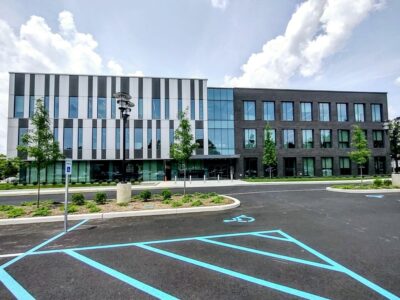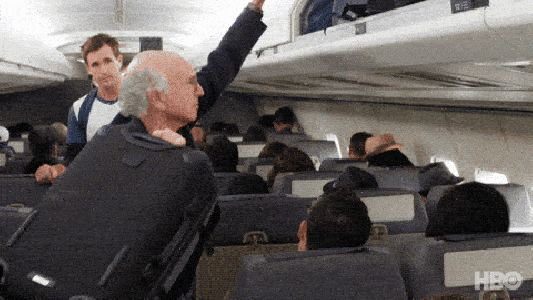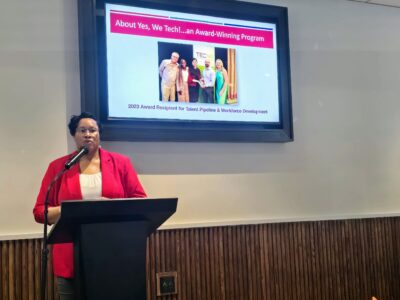FedTech, the federal government-funded, 10-week startup accelerator, held its fall 2019 pitch competition last month in Arlington, Virginia, involving entrepreneurs and mentors from all over the country — and the winning team was ELROI, an optical technology created to improve space situational awareness.
And the results are out! Congratulations to our winner-Team #ELROI w their satellite tech enabling space object identification and People’s Choice Award Team #VideoMagic using machine learning to identify & prevent structural damage on bridges @NNSANews @ENERGY #innovate pic.twitter.com/w0hbm0w6qb
— FedTech (@FedTechStartups) November 22, 2019
ELROI, as it happens, has a Delaware connection: Rob Nicholson, a Sussex County-based Navy veteran and solutions integrator for the Delaware Department of Technology and Information, was its lead mentor. (Another, less residential connection: Ben Solomon, founder and managing partner of FedTech, sits on Delaware Innovation Space’s Entrepreneurial Advisory Council.)
The cohort included three entrepreneurs — Stephanie Seabra of York, Pennsylvania; Ethan Saxon of Washington, D.C. and John Lee of Daytona Beach, Florida — along with three mentors — Nicholson; Dr. John Elling of Santa Fe; New Mexico and Jongwon “JP” Parks of Mclean, Virginia — and the inventor of the technology, Dr. David Palmer of the Los Alamos National Laboratory in New Mexico.
So what is space situational awareness? Nicholson explained:
“Back during the initial Space Race, tech was not at a point where any country had a huge presence in space,” he told Technical.ly. “Over the years, technology has evolved, propulsion has evolved, the ability for GPS has evolved, and with that, the amount of space satellites and debris that has entered low orbit space, specifically, has increased by a huge amount.”
There are several reasons this “space clutter” is an increasingly serious issue. For one thing, it can eventually hinder space travel.
“You have to pass through low orbit space before you can get to the prime orbit space and further out,” Nicholson said.
But it’s the potential effect on the people remaining Earth-bound that could become an even bigger issue.
“We are so heavily reliant on space satellites that space debris has become a huge problem,” he said. For example, if a satellite launches without awareness of the objects already in lower space, it could cause potentially catastrophic collisions, not unlike if you got in a truck and started barreling down the highway in the wrong direction.
With projects like SpaceX’s Starlink satellite constellation and Amazon’s satellite internet plan, low orbit space is becoming more and more crowded. Satellites are kept track of using older tech, but there is an increasing need for more innovative technology that can track everything that’s put into orbit.
“Most [current] tracking for satellites is ground-based and typically utilizes radio frequencies or radar,” Nicholson said. ELROI, in contrast, is optical, using unique light sequences that come from the satellite itself and can be used as identification.
There are several benefits of ELROI technology, but one of the biggest is that it has low power requirements, especially in comparison to radar and radio.
“We’re still in the beginning stages of the space economy,” he said. “It’s basically space traffic management.”
Before you go...
Please consider supporting Technical.ly to keep our independent journalism strong. Unlike most business-focused media outlets, we don’t have a paywall. Instead, we count on your personal and organizational support.
3 ways to support our work:- Contribute to the Journalism Fund. Charitable giving ensures our information remains free and accessible for residents to discover workforce programs and entrepreneurship pathways. This includes philanthropic grants and individual tax-deductible donations from readers like you.
- Use our Preferred Partners. Our directory of vetted providers offers high-quality recommendations for services our readers need, and each referral supports our journalism.
- Use our services. If you need entrepreneurs and tech leaders to buy your services, are seeking technologists to hire or want more professionals to know about your ecosystem, Technical.ly has the biggest and most engaged audience in the mid-Atlantic. We help companies tell their stories and answer big questions to meet and serve our community.
Join our growing Slack community
Join 5,000 tech professionals and entrepreneurs in our community Slack today!






